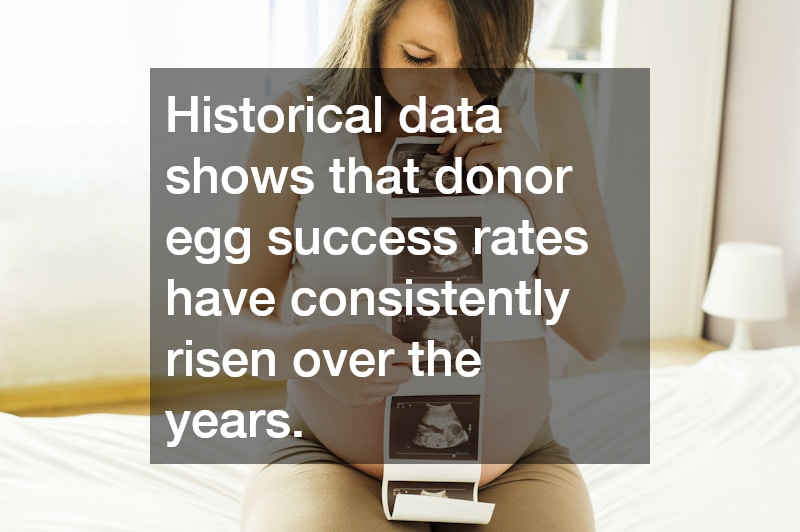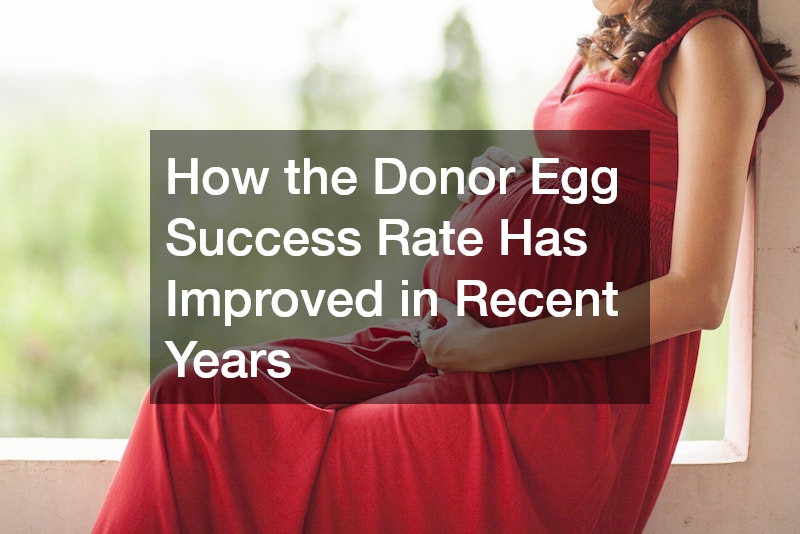Disclaimer: This website provides health information for educational purposes only and is not a substitute for professional medical advice, diagnosis, or treatment. Always seek the guidance of a qualified healthcare provider with any questions you may have.
Over the past few decades, the realm of assisted reproductive technology has witnessed profound advancements. Among these advancements, the success rate of using donor eggs in fertility treatments has significantly improved. This improvement has brought renewed hope to countless individuals and couples facing infertility challenges. By examining the current landscape and comparing it to the past, we can appreciate the strides that have been made.
Additionally, understanding the factors influencing these success rates can provide critical insights for prospective parents considering donor eggs.
The increase in donor egg success rates isn’t merely a consequence of better medical technology but also enhanced methodologies and protocols. Clinics around the world have adopted more rigorous screening processes for both donors and recipients. This ensures compatibility and wellness, crucial factors that contribute to the success of such procedures. Moreover, advancements in egg freezing and thawing techniques have played a pivotal role. It is fascinating to observe how these technical improvements have collectively bolstered the effectiveness of donor egg treatments.
Historical data shows that donor egg success rates have consistently risen over the years. A significant shift was observed when many clinics reported higher success rates in the early 2000s, a trend that has continued to progress. This increase has been fueled by various scientific and technological innovations. Notably, an improvement in laboratory environments and culture techniques has made a significant impact. Professionals in reproductive medicine remain optimistic about further advancements that could propel success rates to even greater heights in coming years.
Technological Advancements in Donor Egg Use
The success of donor egg treatments has been profoundly impacted by developments in reproductive technologies. New techniques in embryo culture, genetic screening, and egg preservation have been at the forefront of these advancements. For example, vitrification, a rapid freezing technique, has revolutionized egg preservation by minimizing ice crystal formation, leading to higher survival rates of eggs. This contributes directly to higher success rates post-thaw and fertilization. The implementation of such advanced technologies has made the donor egg process more efficient and reliable for both donors and recipients.
Genetic screening methods, particularly preimplantation genetic testing (PGT), have drastically improved outcomes by allowing for the selection of embryos with the highest potential for success. This process helps in identifying genetically normal embryos, which are more likely to result in a successful pregnancy and healthy baby. Clinics are increasingly adopting these technologies, which is evident in the consistent rise in donor egg success rates. These technologies not only ensure better success rates but also alleviate concerns about genetic diseases. As these technologies become more widespread and refined, they will likely contribute even more to the improved outcomes seen in donor egg treatments.
Laboratory advancements have also considerably enhanced the donor egg process. Modern labs strive to create optimal conditions for embryo development with improved culture media and equipment. Controlled laboratory environments mimic the natural conditions of the human body, encouraging healthier and more robust embryo development. Each step within the lab, from egg retrieval to embryo transfer, has been meticulously optimized to ensure maximum efficacy. As these advancements continue, they promise even greater improvements in donor egg success rates and bring hope to many who seek to expand their families.
Impact of Improved Practices and Protocols
A key factor in the improved success rates of donor egg treatments is the refinement of medical practices and protocols. Clinics have implemented more comprehensive screening processes to ensure that only the healthiest eggs are used. Furthermore, a personalized approach towards treating clients has become standard practice, enabling customization according to each patient’s needs. This individualized care has been recognized as crucial for achieving successful outcomes. As clinics continue to refine their approaches, success rates are expected to increase even further, making donor egg treatments even more appealing.
Another vital aspect of improved practices is the enhanced training and experience of medical professionals managing donor egg treatments. Clinicians now have better access to continuous education, keeping them abreast of the latest developments in reproductive medicine. This expertise allows professionals to manage the treatment process more effectively, including mitigating potential risks and complications. The result is an increase in positive outcomes and higher donor egg success rates. Therefore, the expertise and preparedness of medical professionals play a pivotal role in the successes observed.
Patient-centric protocols have also been significant in improving treatment outcomes. Communication and psychological support for individuals undergoing donor egg fertility treatments are integral to these protocols. Patients who feel heard and supported are more likely to have positive experiences and outcomes. Additionally, ethical considerations and ensuring informed consent form the backbone of these patient-focused practices. As patient satisfaction remains a priority, the holistic approach is likely to continue contributing to the rising success rates of donor egg treatments.
The Future of Donor Egg Success Rates
Looking to the future, the field of reproductive technology promises even more advancements that could further improve donor egg success rates. Emerging areas such as artificial intelligence and gene editing may revolutionize how treatments are conducted and monitored. These technologies could offer new ways to enhance embryo selection processes or even improve genetic integrity. However, ethical considerations remain a vital component of these discussions. As the field continues to evolve, balancing innovation with ethical practices will be key to sustained success.
The anticipated improvements are not limited to technological advancements. Increasing awareness and interest in donor egg treatments are paving the way for greater research investment. This, in turn, could lead to innovative breakthroughs in the form of new methodologies or technologies. By keeping the focus on improving success rates and patient satisfaction, the field can anticipate dynamic growth and informative research areas. Such developments are encouraging for prospective parents who are considering donor eggs as a viable option.
In conclusion, the donor egg success rates have markedly improved in recent years due to technological innovations, refined medical protocols, and specialized patient care. As we look forward, the potential for this upward trend remains strong with ongoing research and development. The hope is to provide even more individuals and couples with successful outcomes and the joy of parenthood. With continued advancements, these treatments will likely become more accessible and successful, thus fulfilling the dreams of many. It is an exciting time for reproductive medicine, and the future holds much promise for those hoping to expand their families through donor egg procedures.





